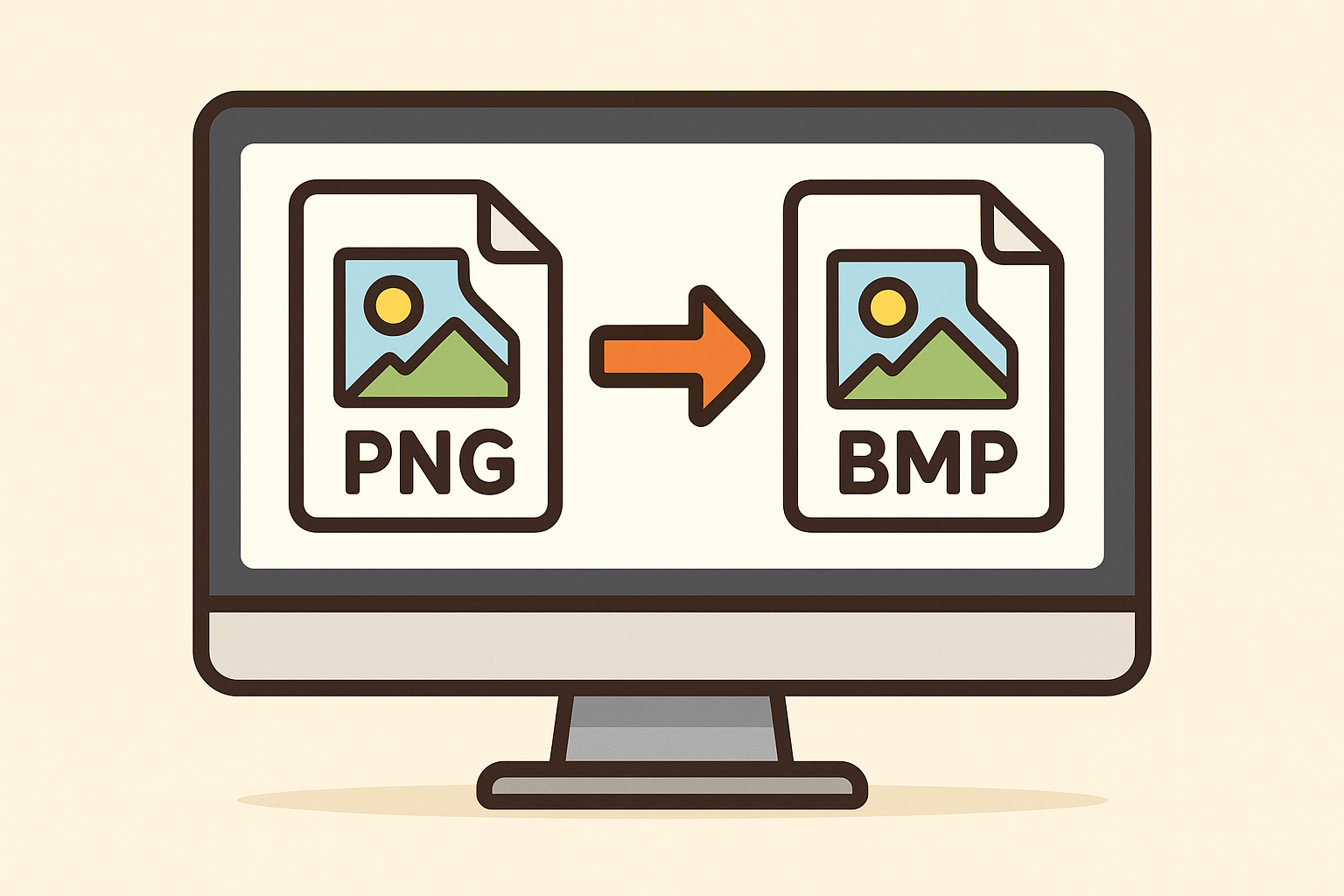
PNG to BMP
Created on 5 October, 2025 • Image Manipulation Tools • 13 views • 2 minutes read
Convert PNG to BMP easily with this complete guide. Learn what PNG and BMP are, why you might need conversion, and the best tools for fast and high-quality results.
PNG to BMP: A Complete Guide to Image ConversionWhen working with digital images, the need to convert file formats often arises. One common conversion is PNG to BMP. Both formats have their own strengths, and depending on your project, you may need to switch between them. In this article, we’ll explore what PNG and BMP are, why you might need to convert them, and how to perform the conversion efficiently.
What is PNG?
PNG (Portable Network Graphics) is a lossless image format widely used on the web. It supports:
Transparency (including alpha channels)
High-quality images without compression loss
Smaller file sizes compared to BMP
PNG is ideal for digital platforms, logos, graphics with transparency, and images where quality must be preserved.
What is BMP?
BMP (Bitmap Image File) is a raster image format developed by Microsoft. Unlike PNG, BMP files are usually much larger because they are uncompressed. Features of BMP include:
High-quality images without compression artifacts
Better compatibility with older Windows software and devices
Useful for image editing where raw data is required
Although not as efficient for storage or web use, BMP remains valuable in specialized applications.
Why Convert PNG to BMP?
There are several scenarios where you may want to convert a PNG image to BMP:
Software Compatibility – Some older software only accepts BMP format.
Editing Needs – BMP files provide uncompressed image data, making them easier for editing at pixel level.
Printing Requirements – Certain printers and design systems prefer BMP due to its raw image quality.
How to Convert PNG to BMP
Converting PNG to BMP is simple, and there are multiple methods:
1. Using Online Tools
Many free online converters allow you to upload a PNG file and download it as BMP instantly. This is the easiest method if you don’t want to install software.
2. Using Image Editing Software
Applications like Photoshop, GIMP, or Paint can open PNG files and save them as BMP.
Open your PNG file
Click File > Save As
Select BMP as the output format
3. Command-Line Tools
For developers or advanced users, tools like ImageMagick allow quick batch conversion with a single command. Example:
convert image.png image.bmp
Pros and Cons of PNG to BMP Conversion
Pros
Preserves full image quality
Ensures compatibility with legacy systems
Useful for specialized editing and printing
Cons
Larger file sizes compared to PNG
Not suitable for web optimization
Takes more storage space
Conclusion
Converting PNG to BMP is useful when you need uncompressed image data, compatibility with older software, or raw image quality for printing and editing. While PNG remains better for online use due to smaller file sizes and transparency support, BMP offers reliability in certain offline and technical scenarios.
If you frequently deal with images, having both PNG and BMP formats in your toolkit ensures flexibility across various platforms.
Popular posts
-
Barcode readerMisc Tools • 23 views
-
Color pickerMisc Tools • 21 views
-
SHA-256 generatorGenerator tools • 17 views
-
Exif readerMisc Tools • 17 views
-
Ip LookupChecker Tools • 16 views